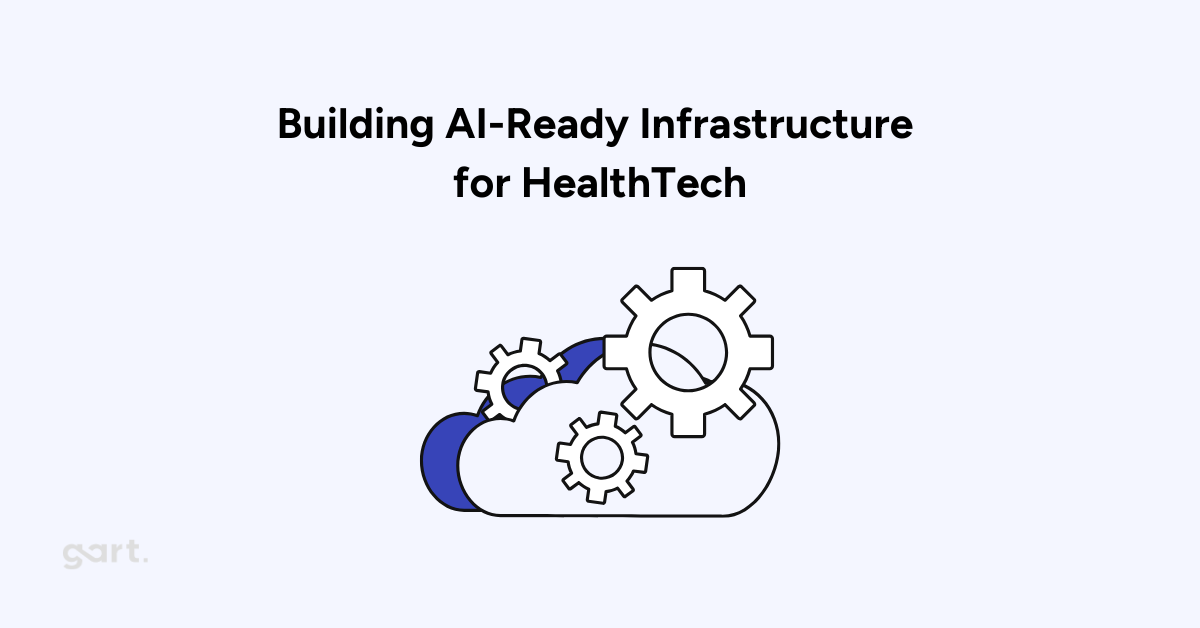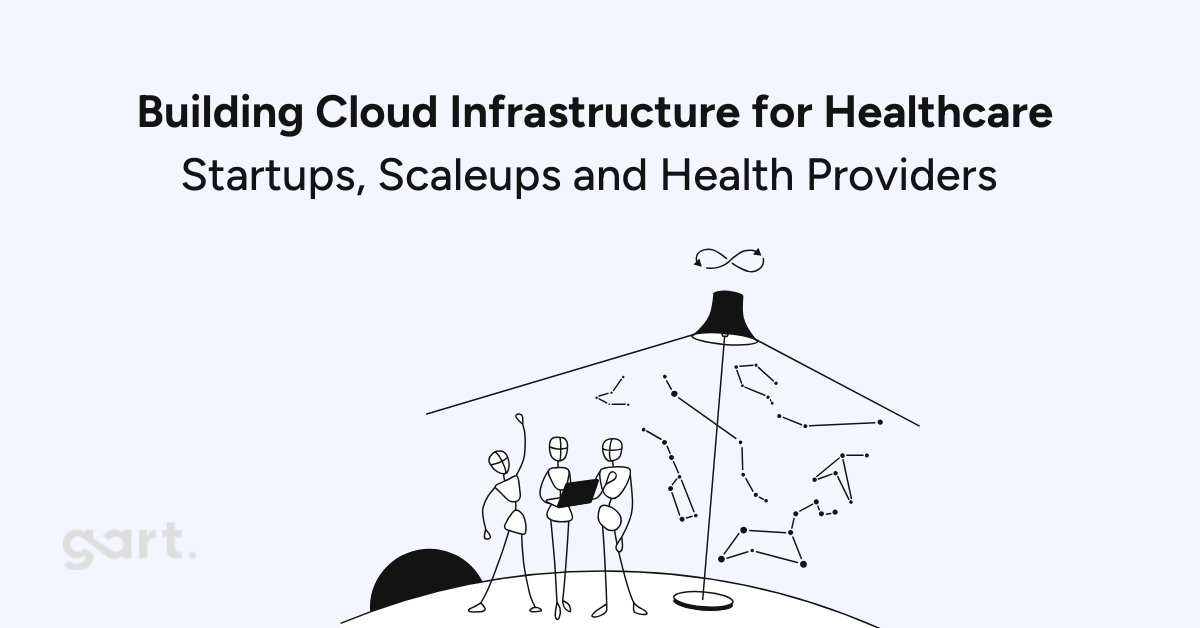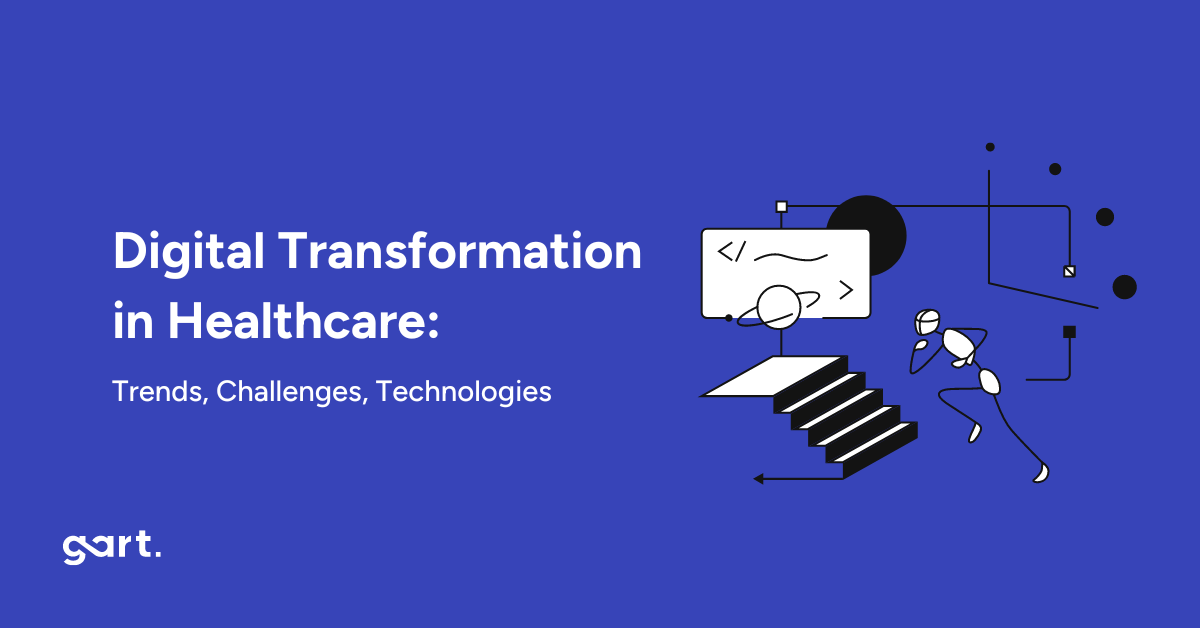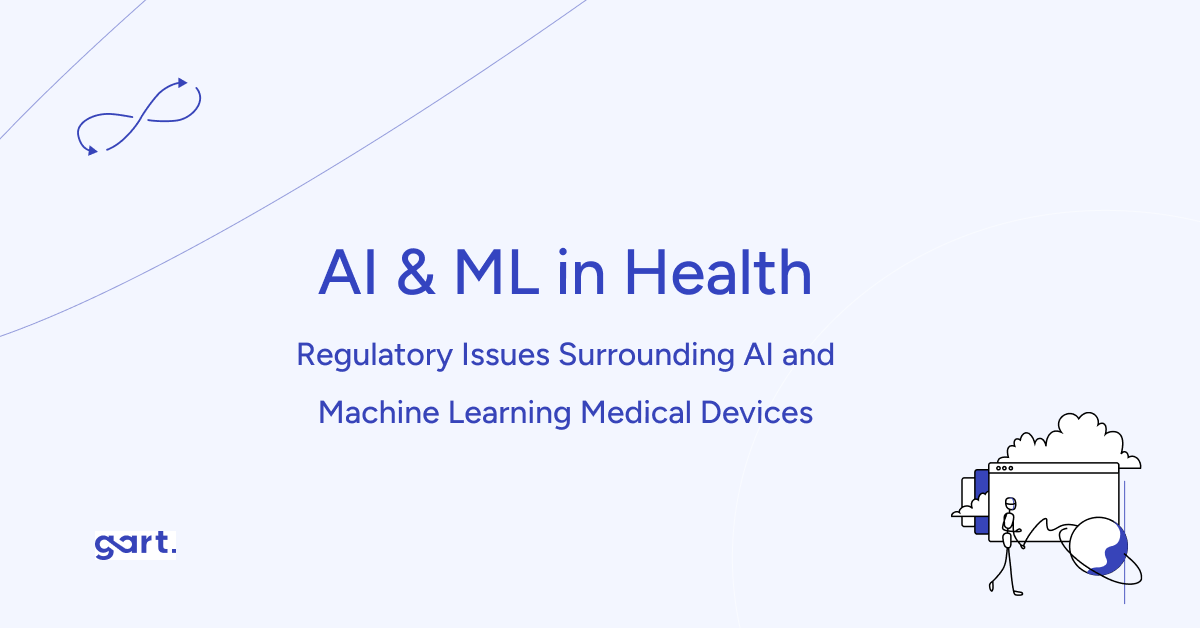- Why Healthtech Needs Purpose-Built AI Infrastructure
- Core Components of AI Infrastructure in HealthTech
- How AI Infrastructure Actually Works
- Your Blueprint: How to Build AI Infrastructure in HealthTech
- What Should Be in Tech Stack for HealthTech Project?
- AI Infrastructure Projects in HealthTech: Real-World Use Cases
- Summary Table: AI Use Cases vs Infrastructure Needs
- Who’s Behind the Curtain? Common Roles in AI Infrastructure
- Let Gart Solutions Lead the Way
- Start Building — The Right Way
Ready to Build Smarter HealthTech Systems?
Digital transformation in healthcare is happening now. But behind every AI-powered diagnostic tool or predictive model lies something less glamorous but essential: IT infrastructure.
This guide dives deep into the what, why, and how of AI infrastructure in HealthTech, packed with real-world examples, strategic steps, and insider tips to future-proof your systems.
Why Healthtech Needs Purpose-Built AI Infrastructure
AI isn’t a software plugin you download — it’s a living, breathing engine that relies on the right digital environment to function. In HealthTech, that environment must do more than just run — it needs to scale, self-correct, protect, and perform without fail.
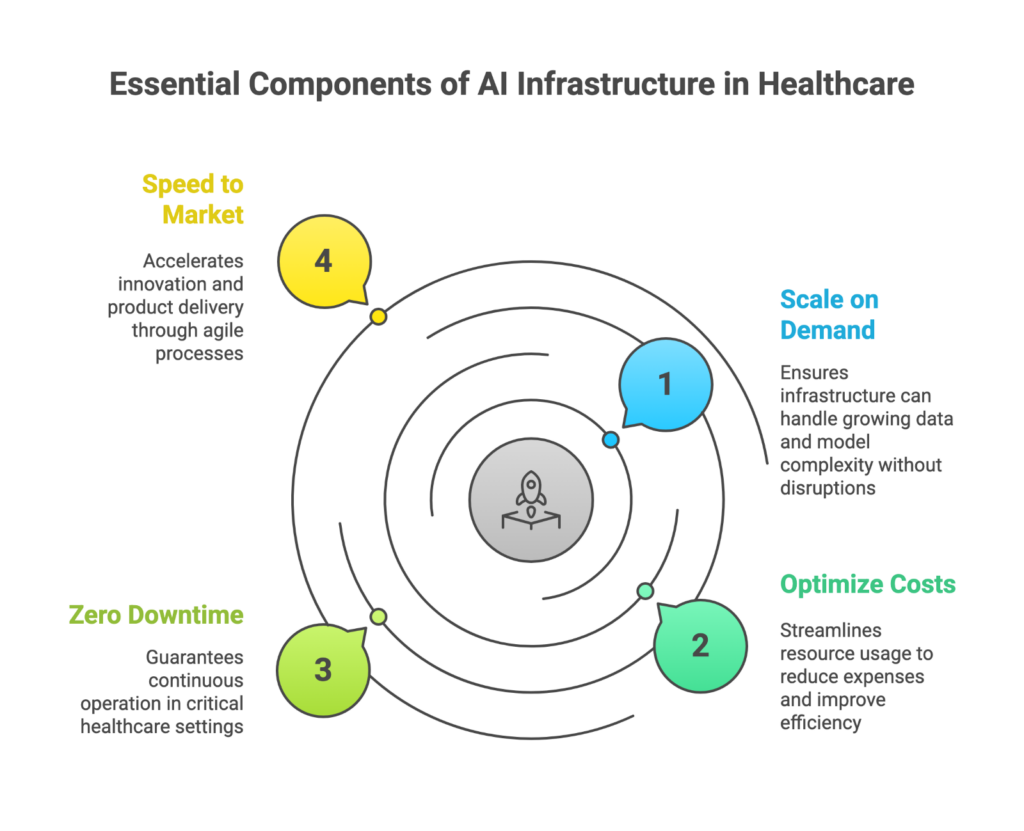
Here’s why cloud infrastructure makes all the difference:
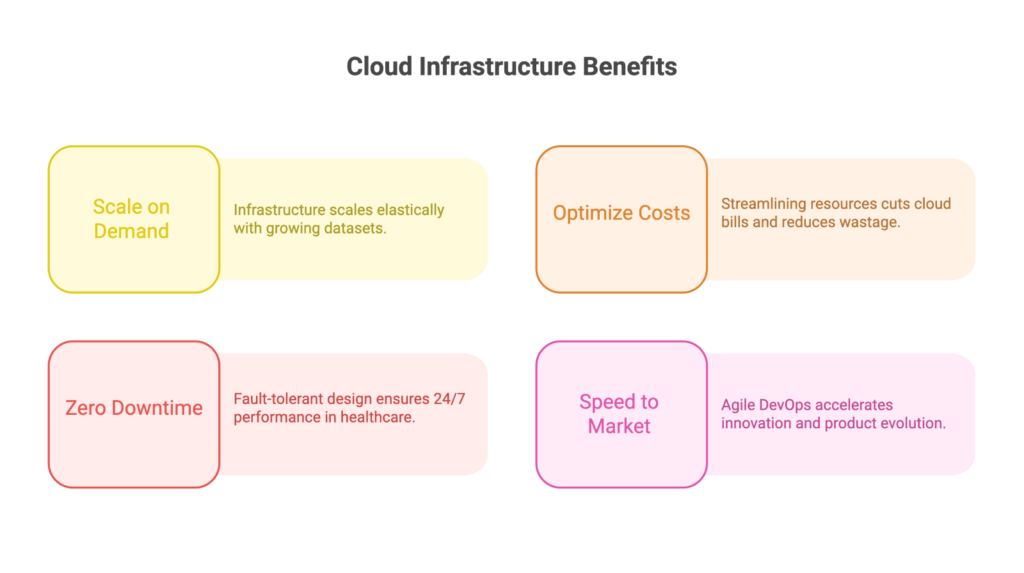
- Scale on Demand: as models get more sophisticated and datasets grow (think imaging, genomic data, or EHR), your infrastructure must scale elastically, without outages or bottlenecks.
- Optimize Costs: streamlining compute resources (GPUs, storage, data transfer) cuts cloud bills and reduces wastage. Efficient architecture pays for itself over time.
- Zero Downtime: AI in healthcare must be resilient — no one can afford downtime in the ICU or during patient intake. Fault-tolerant design ensures 24/7 performance.
- Speed to Market: agile DevOps, CI/CD pipelines, and containerization accelerate innovation — so your product hits the market faster and evolves in real time.
When the infrastructure isn’t there, even the most powerful AI models can stall. That’s why infrastructure is more than a foundation — it’s the nervous system of your AI product.
Core Components of AI Infrastructure in HealthTech
A high-performing AI infrastructure is a symphony of technologies working in sync.
At Gart, we help orchestrate these layers for maximum harmony.
| Layer | Components | Purpose / Benefits |
| 1. Hardware Layer | – GPUs/TPUs: For model training, especially deep learning – CPUs: Ideal for inference in production systems – NVMe Storage: Lightning-fast access to massive datasets | Provides computational power and high-speed storage required for AI workloads |
| 2. Software Stack | – ML Frameworks: TensorFlow, PyTorch, JAX (custom-fitted for healthcare data) – Data Pipelines: Apache Kafka, Spark (real-time data processing) – Containerization: Docker, Podman (reproducible environments) | Builds, trains, and deploys AI models efficiently in robust environments |
| 3. Orchestration & Monitoring | – Kubernetes: Orchestrates deployment and scales containers – Prometheus & Grafana: Real-time monitoring and visualisation – CI/CD Pipelines: Jenkins, ArgoCD, GitLab CI (automated deployments) | Ensures scalable, resilient, and automated AI operations |
| 4. Security & Governance | – RBAC & IAM: Controls data access – Compliance Frameworks: HIPAA, GDPR, SOC2 – Audit Trails & Encryption: Protects data in motion and at rest | Guarantees compliance, data privacy, and patient trust |
| 5. Infrastructure as Code (IaC) | – Terraform: Deploys secure, version-controlled environments across AWS, Azure, or hybrid clouds | Enables rapid, repeatable, and secure infrastructure management |
How AI Infrastructure Actually Works
Let’s break down what an AI infrastructure pipeline looks like in action:
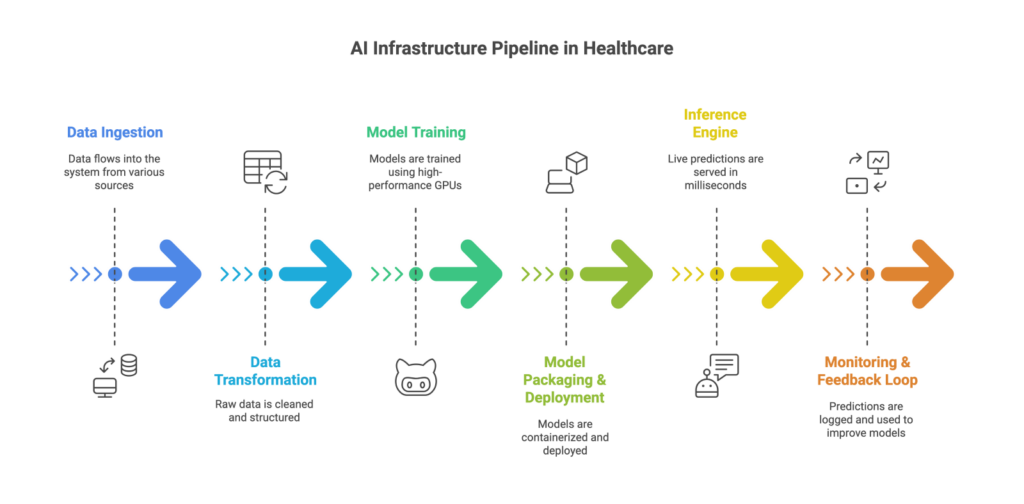
Data Ingestion
From wearable devices, EHRs, CT scans, and lab results, data flows into your system continuously.
Data Transformation
Raw inputs are cleaned, normalized, and structured using tools like Spark or Hadoop.
Model Training
Training happens on high-performance GPUs, orchestrated via Kubernetes to manage compute usage.
Model Packaging & Deployment
Models are containerized and deployed into real-time production systems using CI/CD pipelines.
Inference Engine
Live predictions are served in milliseconds to doctors or backend systems using APIs or edge devices.
Monitoring & Feedback Loop
Every prediction is logged, audited, and used to improve models through continuous retraining.
This isn’t a static system — it’s a loop. The more it runs, the smarter it gets.
Your Blueprint: How to Build AI Infrastructure in HealthTech
Building this isn’t about picking tools randomly — it’s a layered strategy.
Here’s the plan:
Step 1: Define the Use Case
- Real-time ICU monitoring?
- Radiology image analysis?
- Chatbots for triage?
- Something else?
Use Case you are trying to solve and hypothesis behind it – must go first!
Define the “why” (and why people pay you, for your solution), which goes before anything else.
Step 2: Scope the Data Requirements
- What’s the data volume, velocity, and variety?
- Do you need batch processing, streaming, or both?
Step 3: Architect Your Stack
- Cloud-native, hybrid, or on-prem?
- How will security, logging, and data lineage be handled?
Step 4: Select the Right Tech
Choose tools that your team knows — or partner with experts like Gart Solutions to guide implementation.
Step 5: Enforce Security & Compliance
Don’t treat this as an afterthought. Start with HIPAA-readiness and future-proof your stack.
Step 6: Automate & Iterate
With IaC, build environments with one click. Use telemetry to refine continuously.
What Should Be in Tech Stack for HealthTech Project?
| Layer | Tech Examples |
| Ingestion & Storage | Kafka, Hadoop, Cassandra, S3 |
| Processing & Analytics | Spark, Flink |
| ML Frameworks | TensorFlow, PyTorch |
| Containerization | Docker, Podman |
| Orchestration | Kubernetes, Mesos |
| CI/CD & DevOps | Jenkins, GitLab CI, ArgoCD |
| Monitoring & Logging | Prometheus, Grafana, ELK |
| Security & Compliance | IAM, RBAC, encryption, audit logs |
And always combine with:
- SLA-driven monitoring
- MLPerf benchmarking
- Cross-functional collaboration
AI Infrastructure Projects in HealthTech: Real-World Use Cases
Across the global health and AI sectors, forward-thinking organizations are building powerful infrastructure to turn AI from theory into impact.
Below is a curated list of real-world projects showcasing how AI-ready infrastructure drives outcomes — and how Gart Solutions can deliver the architecture to support them.
Smart Hospital Systems
Cleveland Clinic
Real-time AI sepsis alerts are built into the EHR system, reducing ICU mortality and time to treatment.
The clinic requires GPU-enabled inference, EHR access via FHIR APIs, and HIPAA-compliant pipelines.
Oulu University Hospital (Finland):
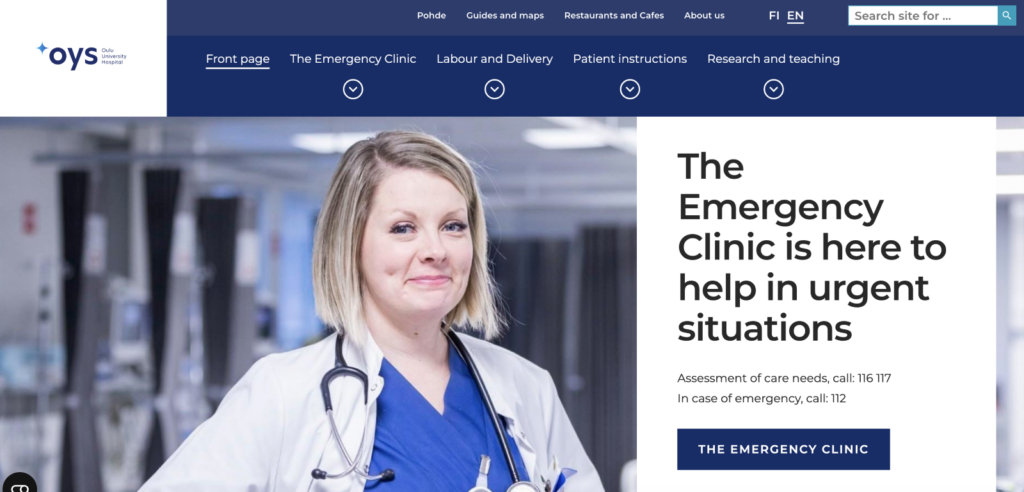
AI for Operational Efficiency
Memorial Regional Hospital (USA):
AI-based bed management system predicted availability with > 90% accuracy, saving millions and shortening ED wait times.
The hospital requires the ingestion of scheduling and patient flow data, and Gart can help utilize AI for operational efficiency of the hospital.
Midwest Health System:
Workforce optimization AI, orchestrated via Kubernetes, saving $8.7M/year.
Ingested shift logs, patient acuity, and census data for predictive modeling.
Infrastructure focus: Secure data lakes, predictive pipelines, and automated deployment frameworks — exactly what Gart delivers through IaC and MLOps.
Research & Federated AI
Mayo Clinic Platform
Federated AI across multiple hospitals, sharing model weights, not data — for privacy-preserving research.
Owkin
Distributed AI training for drug discovery using federated learning infrastructure.
Gart value: Expertise in secure multi-cloud orchestration, encrypted communication, model governance, and federated training setups.
Radiology & Imaging AI
Aidoc Medical
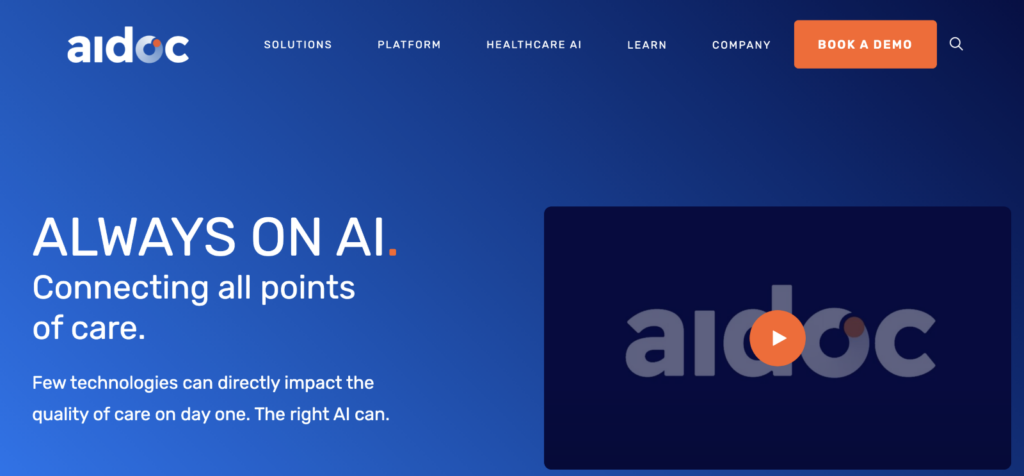
Always-on AI running at radiology workstations and backend servers — automatically flags emergencies (e.g., stroke, hemorrhage) across 1,500+ hospitals.
Portal Telemedicina (Brazil)
Google Cloud-powered AI reading chest x-rays in rural clinics with edge-based diagnostics and cloud-based monitoring.
What’s required: High-speed NVMe storage, container orchestration (K8s), real-time inference APIs, model drift monitoring — all supported by Gart’s infrastructure design.
National & Cross‑Institutional Research Networks
Swiss Personalized Health Network (SPHN)
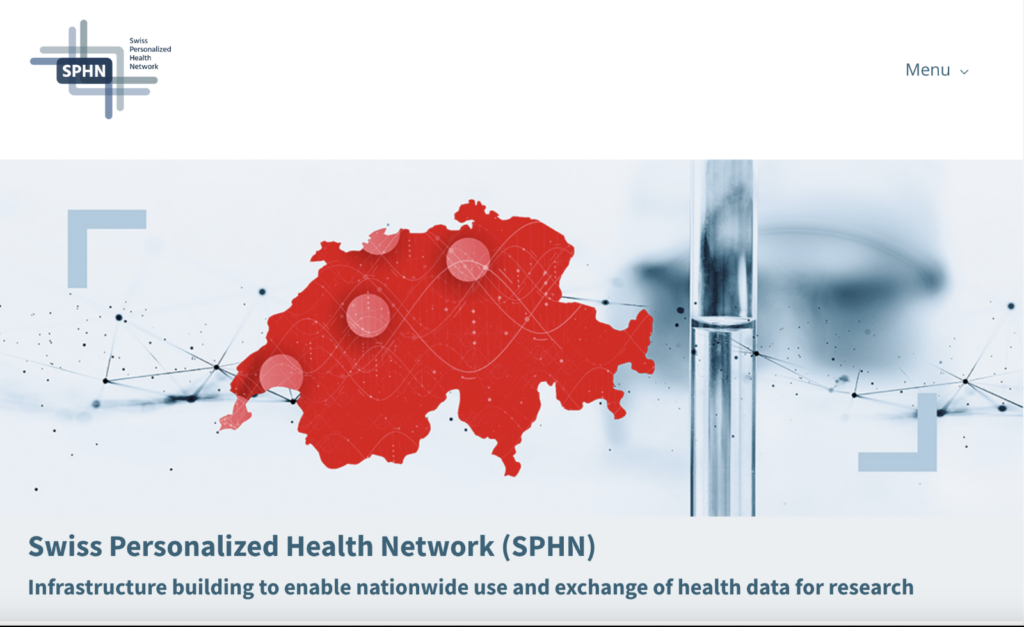
Nationally governed data architecture for AI-driven precision medicine.
Infrastructure insight: These use cases need interoperable APIs (FHIR, HL7), robust governance frameworks, secure compute clusters, and cloud-native elasticity, and Gart can deliver that.
Summary Table: AI Use Cases vs Infrastructure Needs
| Project Type | Infrastructure Components Required |
| Smart Hospitals | 5G, IoT, Edge compute, EHR APIs |
| Operational AI | Data ingestion, analytics pipelines, orchestration |
| Federated AI | Secure model sharing, distributed training, encrypted comms |
| Radiology/Diagnostics | GPU clusters, NVMe storage, real-time inference |
Who’s Behind the Curtain? Common Roles in AI Infrastructure
| Role | Responsibility |
| AI Infrastructure Engineer | Designs and scales compute/storage pipelines |
| Data Scientist | Develops and validates AI models |
| DevOps Engineer | Builds CI/CD, containerization, IaC |
| ML Engineer | Bridges models into production systems |
| Compliance Officer | Ensures HIPAA, GDPR, SOC2 adherence |
Gart helps you assemble this team or supplements your internal one, based on project phase and complexity.
Let Gart Solutions Lead the Way
With deep expertise in cloud architecture, compliance automation, and AI enablement, Gart Solutions provides:
– Turnkey AI infrastructure for health startups and enterprises
– Compliance-ready deployment stacks via Terraform and IaC
– Real-time observability and SLA-backed performance
– Support for EHR integration (Epic, Athena, Cerner) using FHIR APIs
– Optional edge-AI and federated learning architectures
We blend the speed and modern practices with the depth, security, and healthcare domain expertise you won’t find in generalist vendors.
Start Building — The Right Way
Infrastructure isn’t the sexiest part of AI, but it’s the most important.
Done wrong, it leads to slow deployments, security nightmares, and underperforming models. Done right, it’s your secret weapon.
Let Gart Solutions help you build the AI infrastructure that powers breakthrough patient care, real-time diagnostics, and compliant innovation at scale.
See how we can help to overcome your challenges

